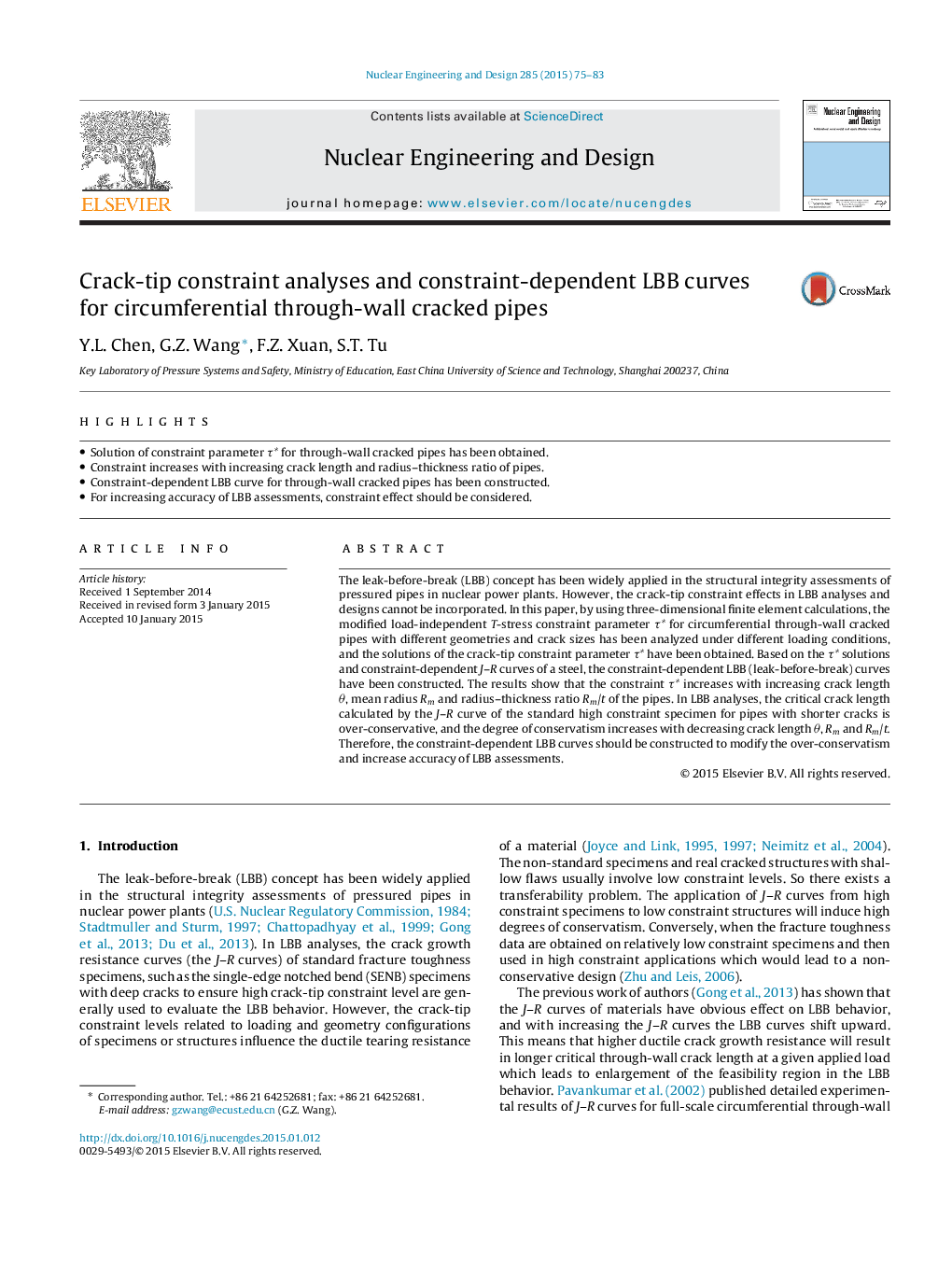| Article ID | Journal | Published Year | Pages | File Type |
|---|---|---|---|---|
| 6761465 | Nuclear Engineering and Design | 2015 | 9 Pages |
Abstract
The leak-before-break (LBB) concept has been widely applied in the structural integrity assessments of pressured pipes in nuclear power plants. However, the crack-tip constraint effects in LBB analyses and designs cannot be incorporated. In this paper, by using three-dimensional finite element calculations, the modified load-independent T-stress constraint parameter Ï* for circumferential through-wall cracked pipes with different geometries and crack sizes has been analyzed under different loading conditions, and the solutions of the crack-tip constraint parameter Ï* have been obtained. Based on the Ï* solutions and constraint-dependent J-R curves of a steel, the constraint-dependent LBB (leak-before-break) curves have been constructed. The results show that the constraint Ï* increases with increasing crack length θ, mean radius Rm and radius-thickness ratio Rm/t of the pipes. In LBB analyses, the critical crack length calculated by the J-R curve of the standard high constraint specimen for pipes with shorter cracks is over-conservative, and the degree of conservatism increases with decreasing crack length θ, Rm and Rm/t. Therefore, the constraint-dependent LBB curves should be constructed to modify the over-conservatism and increase accuracy of LBB assessments.
Related Topics
Physical Sciences and Engineering
Energy
Energy Engineering and Power Technology
Authors
Y.L. Chen, G.Z. Wang, F.Z. Xuan, S.T. Tu,
